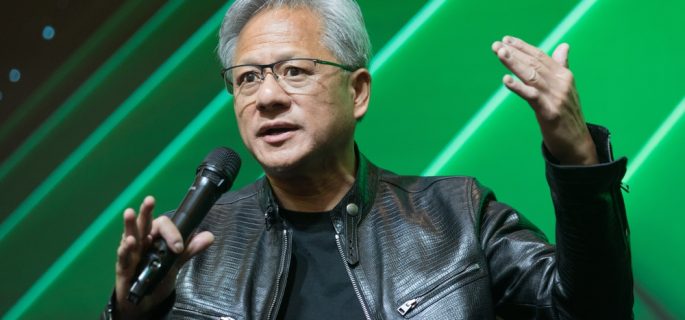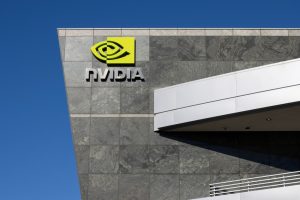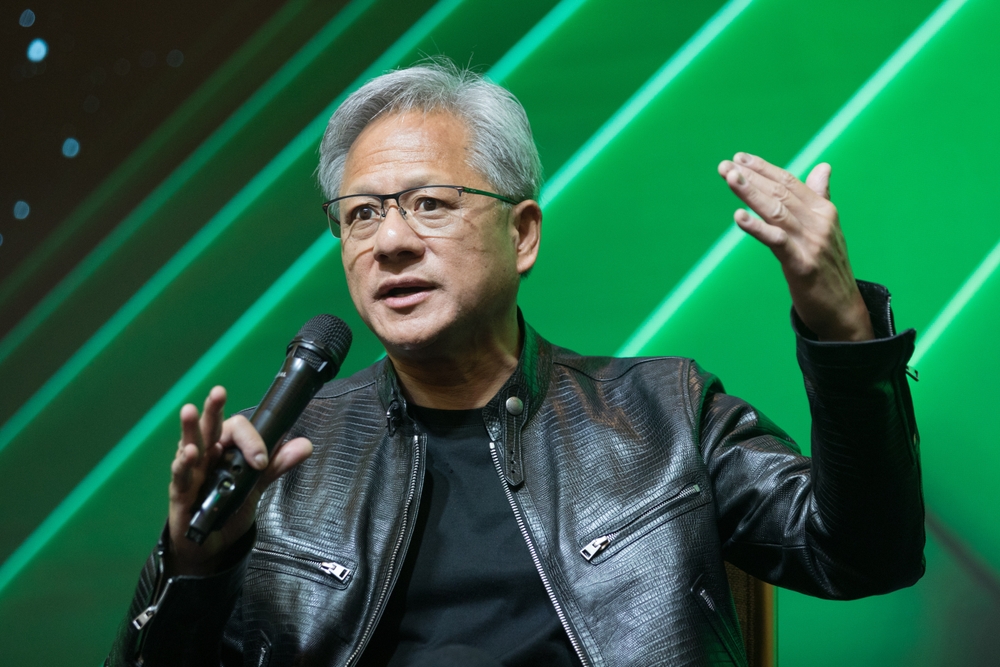
Source: Shutterstock
The GTC 2025 happening in San Jose, Calif., has become one of the marquee events in the tech world. It has grabbed the attention of everyone from industry leaders and developers to AI enthusiasts and even those who remain skeptical about AI’s potential.
A highlight of the event is the keynote address, which was delivered by Nvidia CEO Jensen Huang on Tuesday. Known as a visionary in the AI industry, Huang’s words carry significant weight, setting the tone for advancements and trends that will shape the future of technology.
In his keynote, Huang outlined Nvidia’s advancements in AI and his predictions of how the industry will evolve in the next few years. This year’s event highlighted not only the rapid acceleration of the AI revolution but also how Nvidia is reshaping itself to continue being a driving force in technological innovation.
As we had anticipated in our GTC 2025 preview, a centerpiece of the keynote was Nvidia’s unveiling of its next-generation graphics architectures: Blackwell Ultra and Vera Rubin.
Set for release later this year, the Blackwell Ultra chipset is built to manage increasingly sophisticated AI processes. Boasting specifications like 1-exaflop computing power within a single rack, 600,000 components per rack, and a 120-kilowatt liquid cooling system, the AI chips are undeniably impressive, at least on paper.

Source: Shutterstock
Nvidia plans to integrate its Blackwell Ultra GPUs into two DGX systems: the NVIDIA DGX GB300 and the NVIDIA DGX B300. This will help the company meet the increasing demands of AI workloads, particularly in inference and reasoning.
The move from air-based to liquid cooling is driven by the need for improved energy efficiency. This change isn’t just a minor tweak but a complete reimagining of how AI computing systems are built.
The Vera Rubin AI system is expected to be released in late 2026, while Rubin Ultra will be available in the second half of 2027. Huang pointed out that aside from the chassis, almost every aspect of the Vera Rubin platform has been completely redesigned, showcasing major improvements in processor performance, network design, and memory capabilities. Nvidia has shared some details about Nvidia’s next-generation GPU superchip and new photonic switches.
In the keynote, which lasted more than two hours, Huang highlighted how AI had made “extraordinary progress”. What was once only a futuristic perception has not become a reality. AI has moved from a “computer vision” to GenAI, and now to agentic AI.
“AI understands the context, understands what we’re asking. Understands the meaning of our request,” he said. “It now generates answers. Fundamentally changed how computing is done.”
According to Huang, the demand for GPUs from the top four cloud service providers is surging. Among the many staggering projections shared by Huang about AI’s transformative potential, one figure stood out: Nvidia expects its data center infrastructure revenue to soar to $1 trillion by 2028.
One of Nvidia’s major ambitions is to move from traditional data centers to what it calls “AI factories.” According to Jensen, this would be the next evolution of traditional data centers. The AI factories would essentially be purpose-built, ultra-high-performance computing environments dedicated to AI training and inference.
Sounds like this would need enormous resources. Nvidia shared in a blog that “bringing up a single gigawatt AI factory is an extraordinary act of engineering and logistics — requiring tens of thousands of workers across suppliers, architects, contractors, and engineers to build, ship and assemble nearly 5 billion components and over 210,000 miles of fiber cable.”

Source: Shutterstock
Huang demonstrated how this could be achieved. In his keynote, he showcased how Nvidia’s engineering team utilized Omniverse Blueprint to design and simulate a 1-gigawatt AI factory.
“Two dynamics are happening at the same time,” explained Huang. “The first dynamic is that the vast majority of that growth is likely to be accelerated. Meaning we’ve known for some time that general-purpose computing has run its course, and we need a new computing approach.”
He continued, elaborating on the shift in computing paradigms: “The world is going through a platform shift from hand-coded software running on general-purpose computers to machine learning software running on accelerators and GPUs.”
“This way of doing computation is at this point, past this tipping point, and we are now seeing the inflection point happening – the inflection happening in the world’s data center build-outs.” He emphasized the key takeaway from this first dynamic: “So the first thing is a transition in the way we do computing.”
Agentic AI has been a focus for many companies over the past few months, and Huang shares the enthusiasm. He predicts that AI agents will become a core part of every business process, and NVIDIA is building the infrastructure to support its development.
Huang highlighted robotics as the next wave of AI, powered by “physical AI” that understands concepts like friction, inertia, and cause and effect. He emphasized the importance of synthetic data generation for training AI. This method allows faster learning and eliminates the need for human involvement in training loops.
“There’s only so much data and so much human demonstration we can perform,” he said. “This is the big breakthrough in the last couple of years: reinforcement learning.”

Source: Shutterstock
Some of the announcements and updates from GTC 2025 were anticipated and seemed more incremental rather than groundbreaking. This could be attributed to the immense interest in the company, as many had already speculated on what to expect from the event. This may have caused some truly groundbreaking announcements to feel less surprising or impactful.
Having said that, Huang’s keynote did not influence Nvidia’s stock price as the company might have hoped. Nvidia’s stock dropped over 3% during the keynote, highlighting investor caution amidst high expectations and a volatile market.

